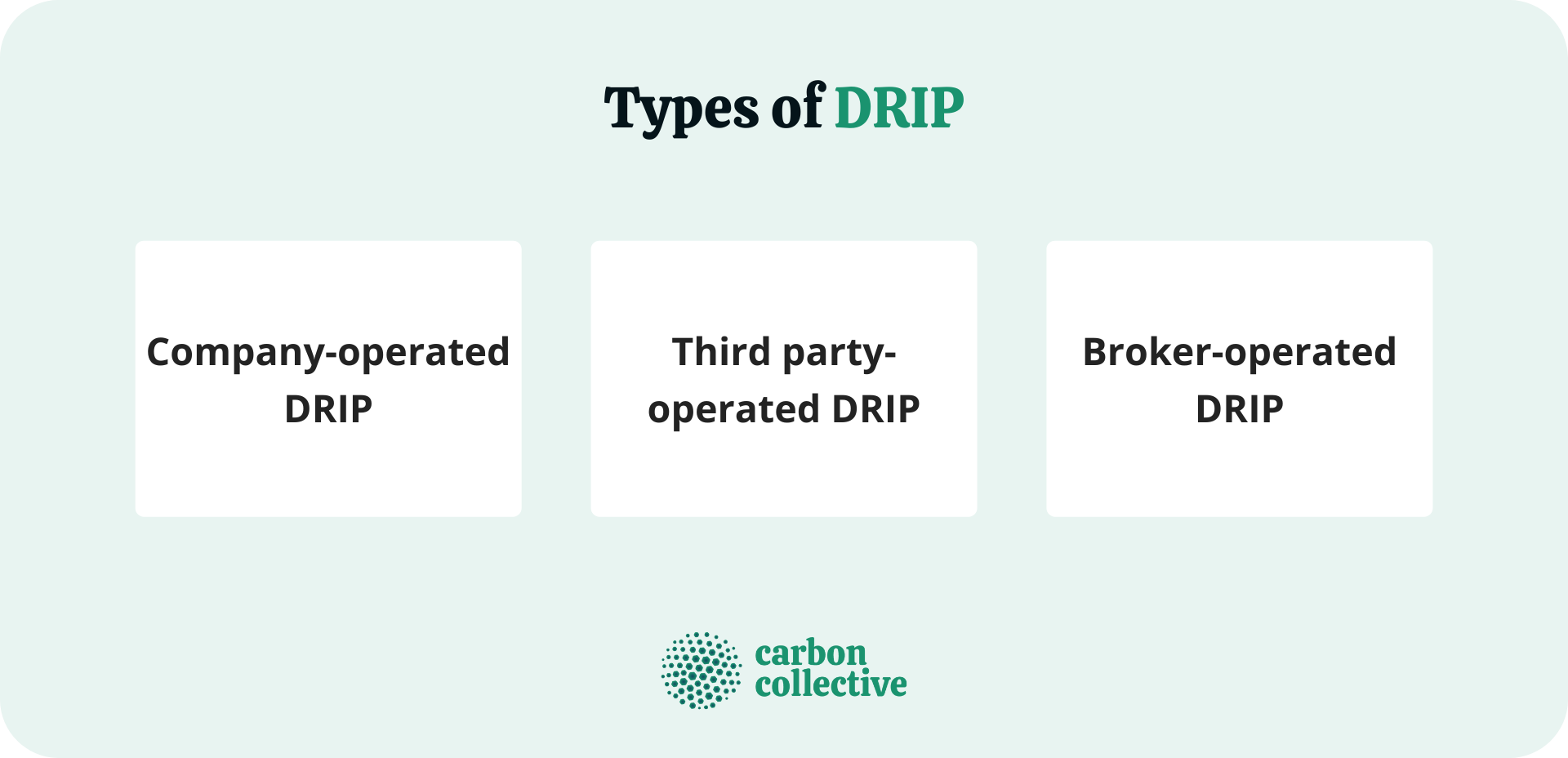Dividend Reinvestment Plan (DRIP) Explained
A dividend reinvestment plan is an investment program that allows shareholders to reinvest their cash dividends in new or fractional stock shares.
Although the word can refer to any automatic reinvestment plan set up through a brokerage or investment institution, it often refers to a publicly listed organization's formal program given to current shareholders.
Dividend reinvestment arrangements are usually commission-free and give a discount on the current share price.
How It Works
DRIPs are administered by the company whose stock is being purchased. When an investor enrolls in a DRIP, the company uses the cash dividends that would ordinarily be paid out to reinvest back into more shares of the company's stock.
On the other hand, investors can acquire shares directly from the specific firm via direct stock purchase schemes (DSPs).
These additional shares are then typically issued to the investor at a discount to the current market price.
Types of DRIP
There are three main types of DRIPs: company-operated, third-party-operated, and broker-operated.
Company-operated DRIP
Businesses run their DRIP, with a dedicated department in charge of the entire strategy.
In this type of plan, the company uses cash dividends to purchase more shares on behalf of the investor. The number of additional shares an investor receives is based on the dividend payment and the share price at the time of reinvestment.
Third party-operated DRIP
With this type of DRIP, a third party (often a bank) manages the plan on behalf of the company. This is typically the option when a company's own DRIP is too costly or time-consuming to operate.
As with company-operated plans, the investor's cash dividends are used to reinvest additional shares.
Broker-operated DRIP
Broker-operated DRIPs are set up and managed by investment brokers. In most cases, the broker will hold the securities in an account on behalf of the investor.
Brokers acquire shares on the open market using a broker-operated DRIP. Depending on customer relationships, they often charge little to no commission for DRIP stock purchases.
Setting Up A DRIP
Before signing up for a DRIP, investors should research the company to ensure it is a good long-term investment.
Investors should also be aware of their broker's fees, if any, and the minimum investment requirements.
The type of DRIP you choose determines the set-up process.
Company-operated DRIPs
DRIPs run by companies are generally available through the company's investor relations page. Even if a corporation doesn't enable you to buy stock directly from them, current shareholders may be able to acquire stock with dividends reinvested.
Third Party-operated DRIPs
To enroll in this type of DRIP, shareholders need to open an account with the financial institution administering the plan on behalf of the company by filling out a form for the dividend-yielding stock they choose.
Some firms also offer partial DRIPs, which enable you to reinvest a portion of your dividends and cash out the rest.
Broker-operated DRIPs
Investors can typically sign up for a broker-operated DRIP through their online broker. If an investor doesn't have a broker, they can open an account with a brokerage firm that offers DRIPs.
Benefits of a Dividend Reinvestment Plan (DRIP)
Enrolling in a DRIP has various advantages, including the following:
-
Commission-free stock purchases: One of the biggest advantages of DRIPs is that they are normally commission-free. This means that investors can reinvest their dividends without incurring any additional costs.
-
Automatic reinvestment: DRIPs offer a hands-off way to reinvest dividends and grow your investment over time. Since the reinvestment is automatic, you don't have to worry about manually reinvesting your dividends.
-
Discounted stock prices: Many companies offer a discount on the share price when you enroll in their DRIP. This can be a percentage of the market price or a fixed dollar amount.
-
Compounding interests: Reinvesting your dividends can help accelerate the growth of your investment portfolio through the power of compounding.
-
Alternative to online investing: For investors who don't want to trade stocks online, DRIPs offer a way to grow your investment without buying and selling shares.
-
Capital for companies: DRIPs can also be beneficial for companies. By reinvesting dividends, shareholders can provide additional capital that the company can use to finance operations or expand its business.
Drawbacks of Dividend Reinvestment Plan (DRIP)
There are certain drawbacks to consider before participating in a DRIP, including the following:
-
Minimum investments: Most DRIPs have a minimum investment requirement. This may be too costly for some investors, especially if you are starting.
-
Fees: While many DRIPs don't charge commissions, some have associated costs. These fees can include enrollment, account maintenance, and transaction fees.
-
Limited investment options: DRIPs usually only offer one investment option: the company's stock that operates the plan. This can limit your investment choices and prevent you from diversifying your portfolio.
-
Unbalanced portfolio: Since DRIPs typically only offer one investment option, your portfolio can become unbalanced if you reinvest all of your dividends. This can be a risky strategy, especially if the company's stock price falls.
Key Takeaways
A DRIP is a dividend reinvestment plan that enables shareholders to reinvest their dividends to buy additional shares of stock. This strategy is often used to grow an investment over time.
DRIPs offer several advantages, including commission-free stock purchases, automatic reinvestment, and discounted stock prices.
There are also some drawbacks to consider before enrolling in a DRIP, such as minimum investment requirements, fees, and limited investment options.
When you want to enroll in a DRIP, you should weigh the pros and cons to see if it is the right investment strategy for you.
FAQs
1. What is a DRIP?
A DRIP is a dividend reinvestment plan that enables shareholders to reinvest their dividends to buy additional shares of stock.
2. How do DRIPs work?
When you enroll in a DRIP, your dividends will be automatically reinvested to purchase additional shares of stock depending on the type of DRIP you choose.
3. What are the different types of DRIP?
There are three main types of DRIP: company-operated DRIP, third-party-operated DRIP, and broker-operated DRIP.
4. What are the benefits of DRIP?
Some of the benefits of DRIP include commission-free stock purchases, automatic reinvestment, and discounted stock prices.
5. What are the drawbacks of DRIP?
Some of the drawbacks of DRIP include minimum investment requirements, fees, and limited investment options.

